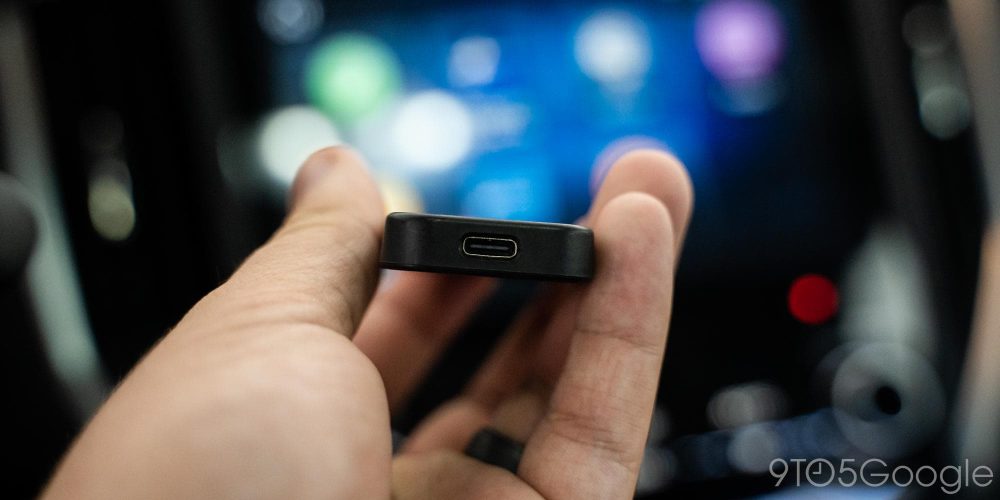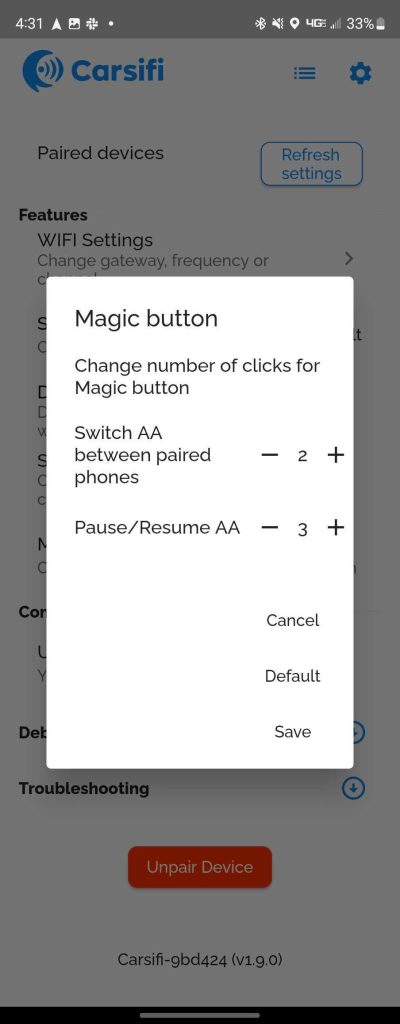
Wireless Android Auto was once a feature that required buying a high-end car or aftermarket head unit, but it’s become far more accessible over the past couple of years, thanks to adapters. AAWireless started the ball rolling, and the Motorola MA1 further pushed the idea to the mainstream. Carsifi, too, has been available for some time and shares a lot in common with those other Android Auto adapters but with one neat trick alongside it.
Carsifi shares a remarkable amount in common with AAWireless, the original wireless Android Auto adapter. It has a subtle black plastic design that plugs into a USB-C cable of your choosing. It pairs over Bluetooth and then connects over Wi-Fi Direct. Frankly, it gets the job done very well!
I’ve been using Carsifi in my 2019 Subaru Crosstrek for the past several months in rotation with AAWireless and the Motorola MA1, and all three perform roughly the same in day-to-day use.
Carsifi connects to my various smartphones – primarily Pixel 6 Pro, Galaxy Z Fold 3, and Galaxy Z Fold 4 over the past few months – in a few seconds and generally has Android Auto up and running within 30-50 seconds. I’ve had little to no issue with lag or pairing issues on the whole. On two occasions, I did notice that Carsifi refused to acknowledge my phone, which required re-pairing to fix the problem, but this usually occurred after I switched to a new device. I’ve run into similar issues with AAWireless in the past.

The special “trick” for Carsifi is that it has a “magic button” that can control which phone is powering Android Auto in your car. A double-click of the button cycles between the last two smartphones paired to Carsifi. In my experience over the past several months, I’ve found this works moderately well. There’s a delay of several seconds between pressing the button and the connection actually changing over, at least in my car, and it works relatively reliably.

But really, I struggle to see just how useful this is. The obvious use case is if you share a car with someone else, but most of the time, pairing doesn’t complete until I’ve left my home anyway, so the adapter generally connects to the phone in my pocket without any issue. And if the intention is to be able to switch between phones while in the car, that’s even less practical. The whole point of Android Auto is to give the driver better control over their phone without taking their eyes off the road. Giving control over maps and music to the passenger just feels unnecessary, especially considering this wouldn’t work like “passing the AUX cable” in the middle of a drive – Android Auto won’t let you set up the system if the car is moving.
The other main use case for the “magic button” is to “pause” Android Auto. Frankly, I never found any practical use for this whatsoever.
The options for this button, and the dongle in general, can be handled through the Carsifi app. The app is pretty basic and works, but it’s something you’ll almost never interact with beyond troubleshooting. It’s not needed for setup by any means. But, the sheer existence of this app solves my biggest complaint with the Motorola MA1. Unlike that adapter, Carsifi is fully capable of getting firmware updates, and it’s gotten a couple of them in the time I’ve been using it.



At the end of the day, Carsifi gets the job done fairly well, and it’s no more expensive than other options.
But realistically, I think most buyers are better off with other options. AAWireless can easily be purchased on Amazon, and stock on the Motorola MA1 is also becoming easier and easier to obtain, and both of those have better track records for support. You don’t have to search for long to find messy experiences with Carsifi’s support.
The quick-switch button is the only thing that really sets Carsifi apart, and really, it’s not that useful. Carsifi is available for $89, on a semipermanent discount from $99, directly from the brand’s website.
More on Android Auto:
Author: Ben Schoon
Source: 9TO5Google



